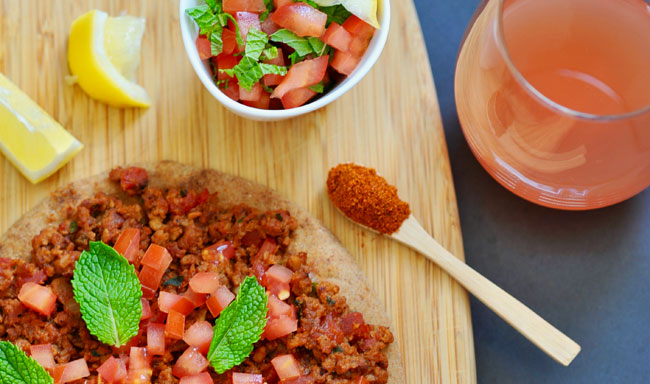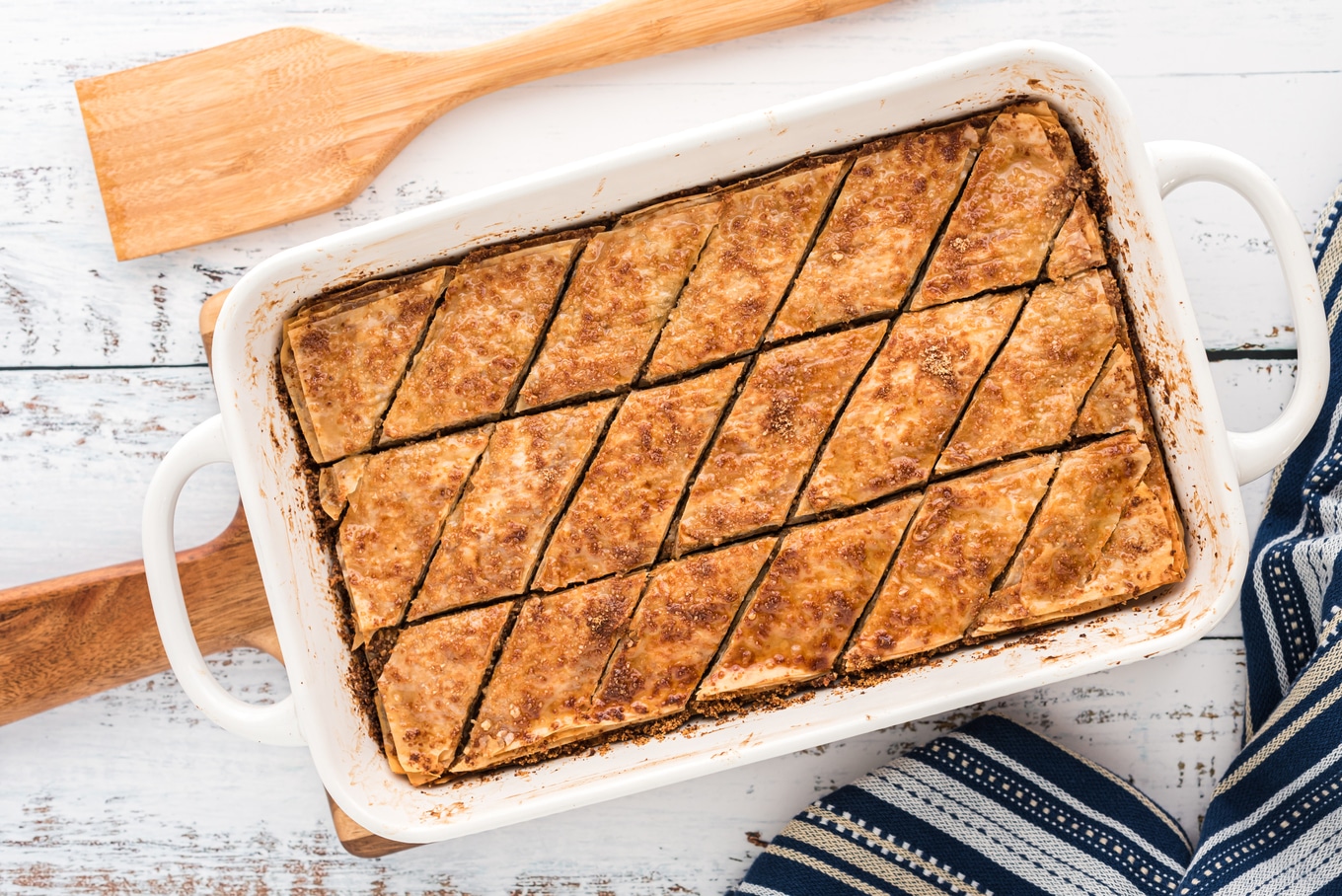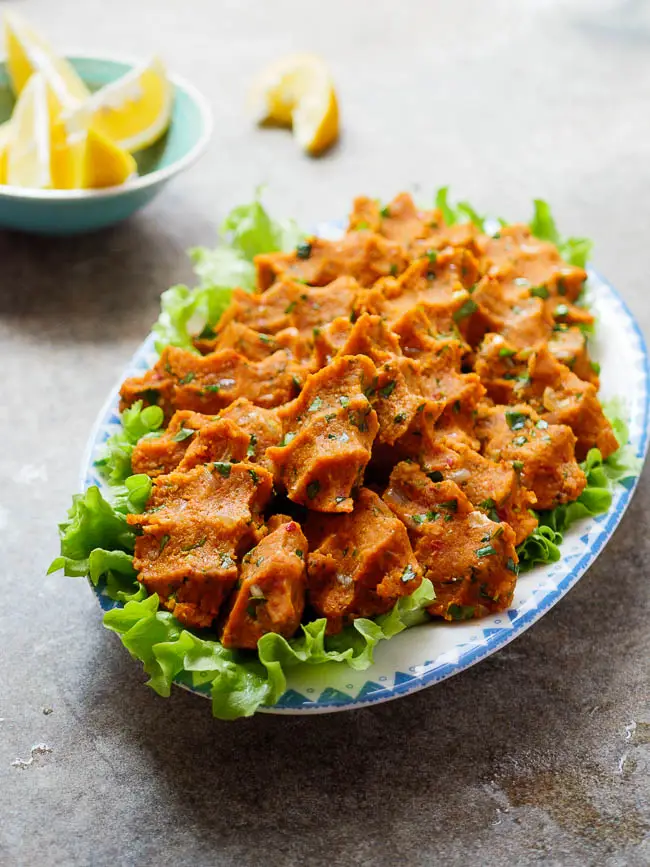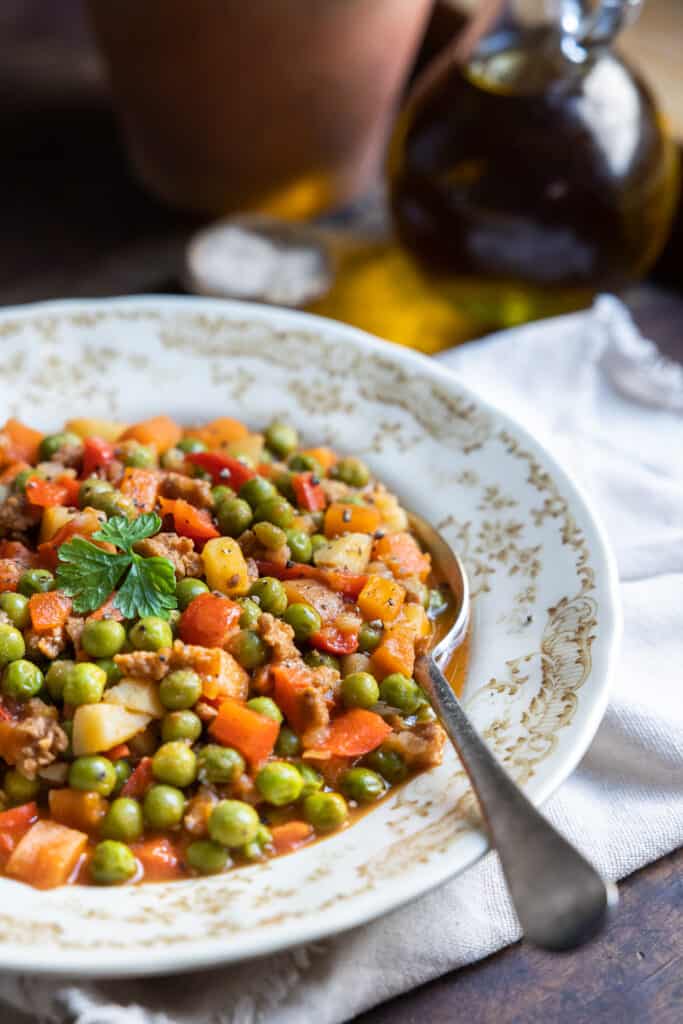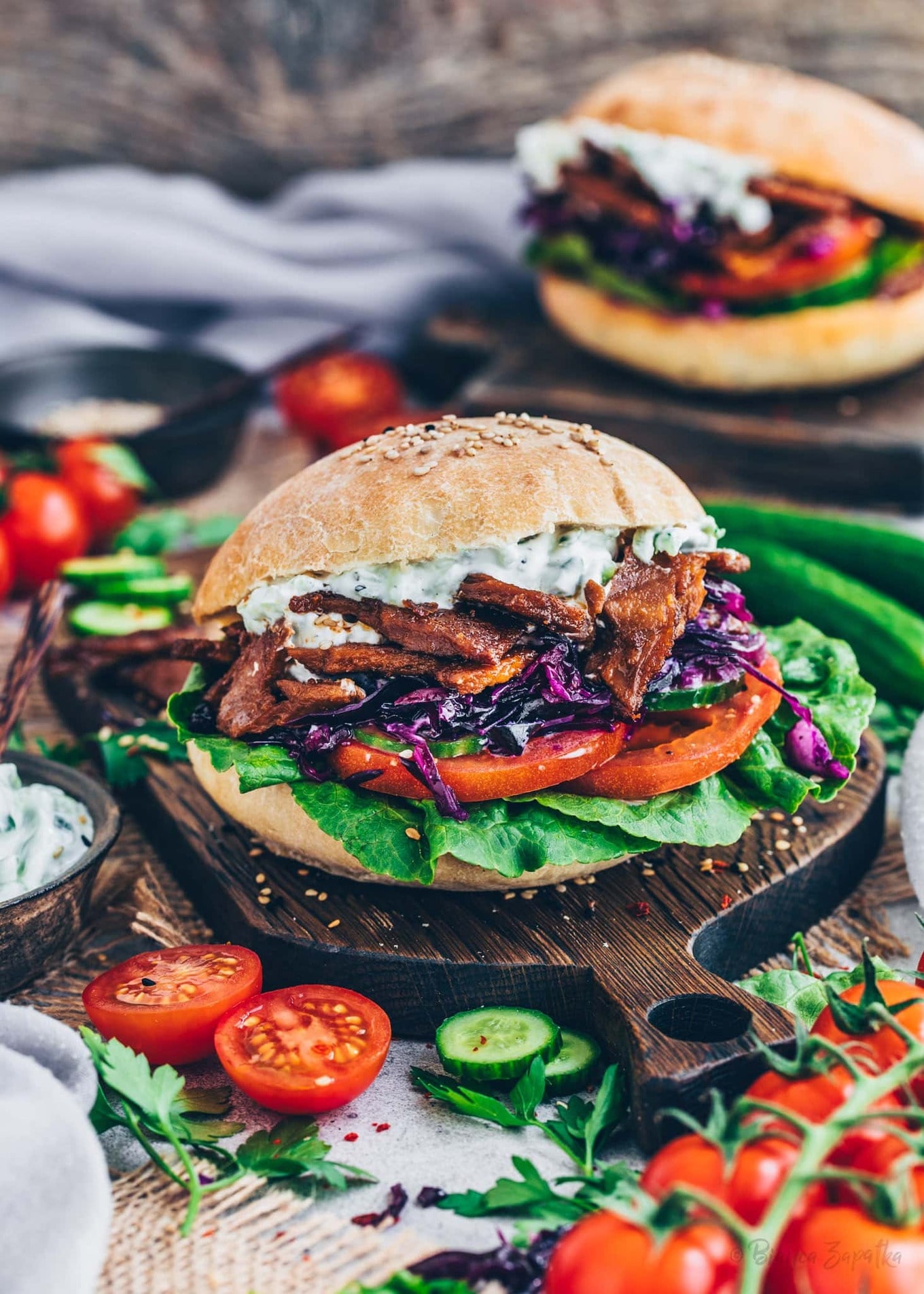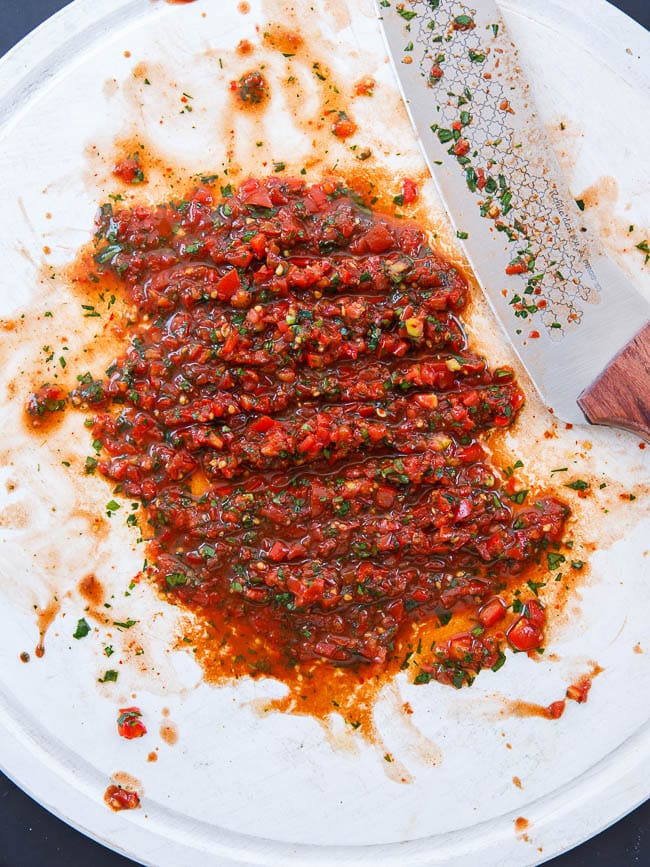Turkey—officially known as the Republic of Türkiye—is not only home to some of the world’s most picturesque scenery, as well as fascinating history and culture, but it also has a diverse and vibrant culinary scene.
From the bustling streets of Istanbul to the culinary capital of Gaziantep, the cuisine is as diverse as the regions it hails from. Think sizzling doner kebabs, fragrant spices, and sweet, flaky baklava. But you don’t need a passport or a plane ticket to savor these unique flavors—nor do you need animal products. Intrigued? We’ve gathered some of our favorite plant-based takes on Turkish recipes below.
What is Turkey’s most famous food?
Without a doubt, Turkey’s most famous culinary export is the doner kebab. The simple yet flavorful dish consists of shaved meat (usually lamb, beef, or chicken), which has been sliced from a vertical rotisserie. It’s often served in a wrap, but it can also be plated with rice and salad. Outside of Turkey, the dish is particularly popular in the UK, where it’s a late-night takeout favorite. In fact, according to one Foodhub study, one in 10 Brits eat a doner kebab every single day.
 Pexels
Pexels
But the doner kebab isn’t alone. Baklava is another international favorite. In 2022, it was even named in Grubhub’s top 10 list of most popular desserts in the US. Köfte (Turkish meatballs) is another popular Turkish food around the world, as is imam bayildi, which consists of stuffed eggplant with onions, garlic, and tomatoes.
Which Turkish dishes are plant-based?
Imam bayildi is one of Turkey’s most beloved plant-based dishes, but this cuisine boasts several naturally vegan traditional recipes. Kisir, for example, is a popular Turkish salad, made with bulgur, tomato paste, parsley, mint, lemon, and pomegranate. There’s also ezme, a spicy tomato and pomegranate salsa, and zeytinyağlı dolma. The latter, which is very similar to Greek dolmades, consists of vegetables or grape leaves stuffed with rice, herbs, currants, and pine nuts.
Turkey, which borders the Mediterranean Sea, has one of the most vegan-friendly cuisines in the world, due to its emphasis on vegetables, grains, legumes, and herbs. It’s also one of the most nutritious. In fact, the US News & World Report just named the Mediterranean diet as the healthiest way to eat for the eighth year in a row.
8 vegan Turkish recipes
Below, we’ve listed some of our favorite vegan Turkish recipes, from baklava to eggplant flatbread to traditionally meaty dishes, like doner kebab. As Turkish people often say: Afiyet olsun!
BECOME A VEGNEWS VIP: Get exclusive product deals, freebies, and perks galore!
1 Vegan Turkish Pizza (Lahmacun)
Lahmacun, often referred to as Turkish pizza, consists of a thin, crispy flatbread topped with minced meat, vegetables, and spices. This recipe simply swaps out the minced meat for vegan beef crumbles to make a tasty, flavor-packed plant-based version of the traditional dish.
Get the recipe
2 Vegan Turkish Flatbread With Eggplant and Tomatoes
This flatbread dish, also known as pide, is similar to Turkish pizza, but instead of a flat pizza base, the bread is shaped like a canoe. It’s the perfect vessel for your favorite Mediterranean vegetables, like eggplant, tomatoes, garlic, and peppers.
Get the recipe
3 Almond-Pecan Vegan Baklava
Traditionally, baklava is often made with butter or honey, but it’s easy to swap these ingredients out to make the dessert plant-based. This recipe from Dreena’s Kind Kitchen cookbook, for example, uses ingredients like agave nectar, coconut sugar, and canned coconut cream.
Get the recipe
4 Turkish Lentil Meatballs (Mercimek Köftesi)
Lentil meatballs are another plant-based staple in Turkish cuisine. They’re simple to make and loaded with nutrition thanks to the key ingredients: red lentils and bulgur. They also lend a pop of color to any dinner spread thanks to their bright orange color, and, of course, they’re pretty tasty. Learn how to make them with this recipe from Istanbul-based food blogger Vidar Bergum. “Turks serve them at just about any occasion,” he writes. “And few leftovers are more treasured than mercimek köftesi in the fridge when a midnight snack is called for.”
Get the recipe
5 Turkish Pea Stew
Known as bezelye, this tasty stew is often made with mince, but just as this recipe from Heartful Table demonstrates, it’s easy to make a hearty, nourishing, plant-based version with ingredients like textured vegetable protein, potatoes, tomato paste, and green peas. “Trust me, you’ll be adding it to your go-to recipes list in no time,” says recipe developer Maša Ofei.
Get the recipe
6 Vegan Doner Kebab
If you’re craving the meaty Turkish classic that is doner kebab, then good news: this recipe from Bianca Zapatka will show you how to get all the texture and flavor using plant-based ingredients like tofu and pulled mushrooms. “It’s easy to make and perfect for anyone looking for a tasty and healthy street food alternative,” says Zapatka.
Get the recipe
7 Vegan Manti Dumplings (Turkish Ravioli)
Another tasty Turkish recipe from Zapatka, these vegan manti dumplings are hearty, satisfying, and incredibly nourishing, especially when they’re filled with ingredients like onions, garlic, vegan ground beef, and spices. Important note: this is not a quick dish, but it is a tasty one. “Making manti requires some skills, but the result is worth every effort,” says the recipe developer.
Get the recipe
8 Turkish Ezme Salad
As mentioned above, ezme is a spicy salsa-like dip, made with simple ingredients like cherry tomatoes, hot peppers, onions, and herbs. It can be served on its own, but its especially tasty as part of a meze or with flatbread. “As with all salads based on fresh vegetables, Turkish ezme salad is best freshly chopped, using vegetables in season,” says Bergum.
Get the recipe
For more plant-based stories like this, read:
JUMP TO ... Latest News | Recipes | Guides | Health | Subscribe


